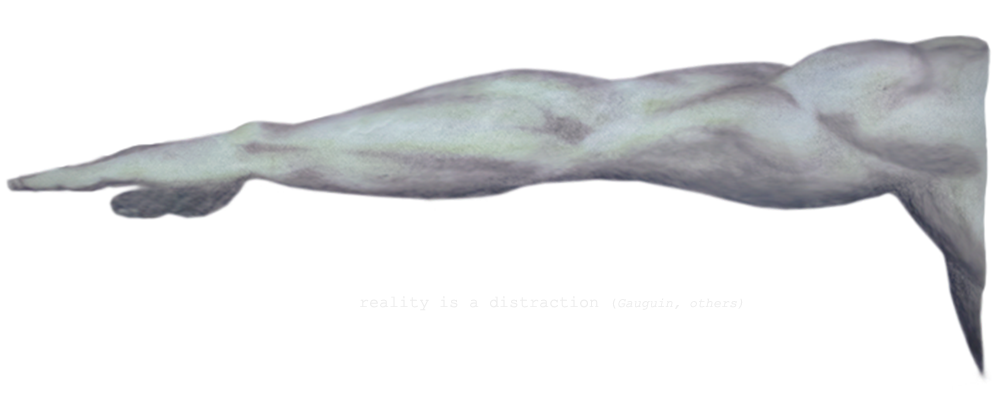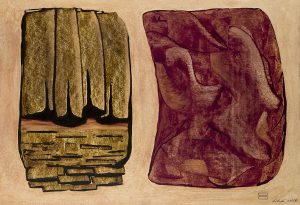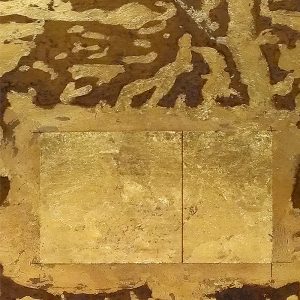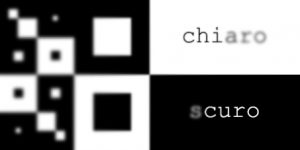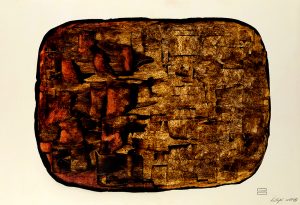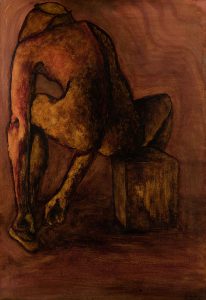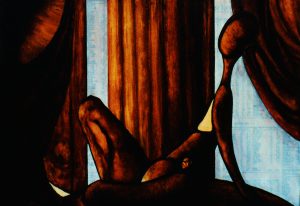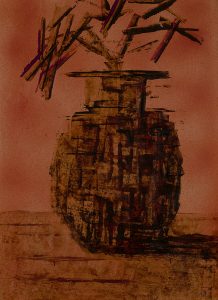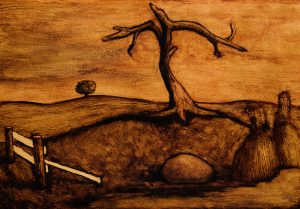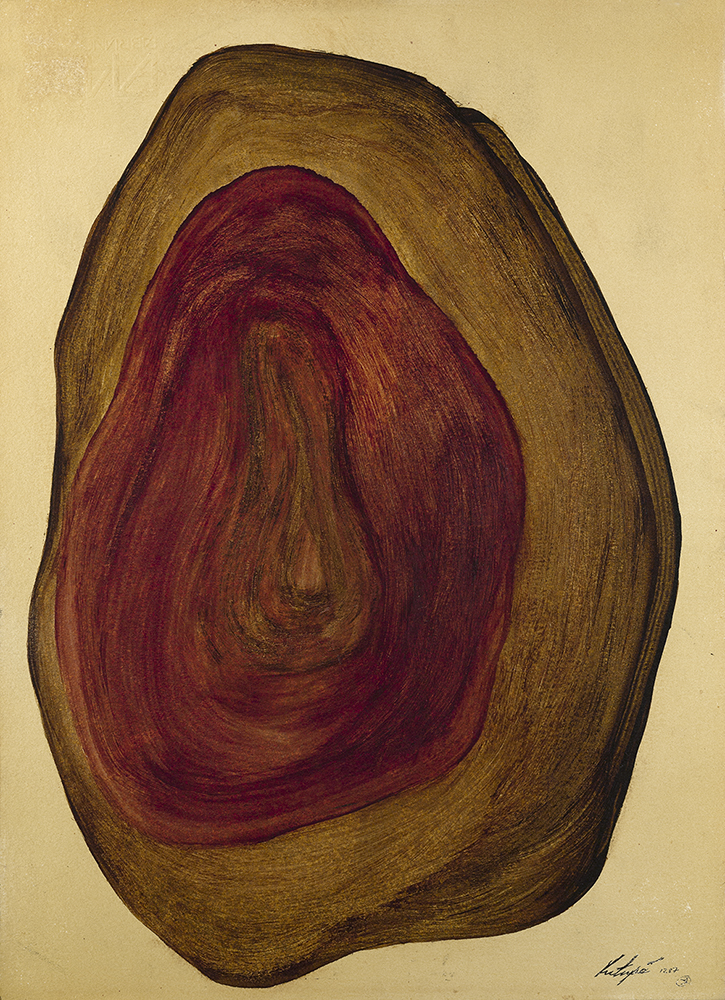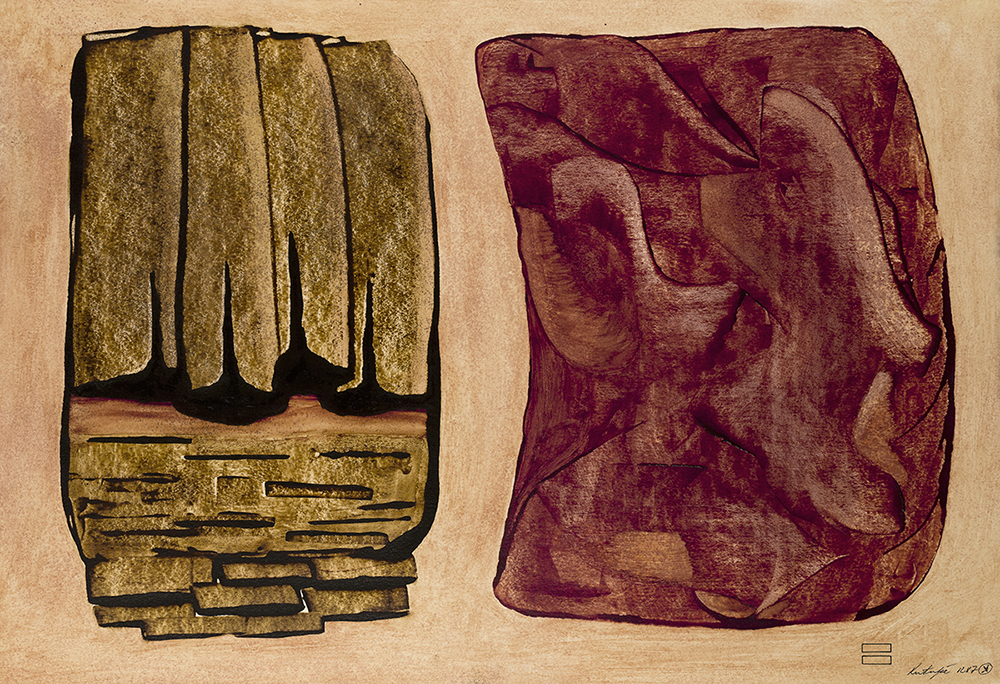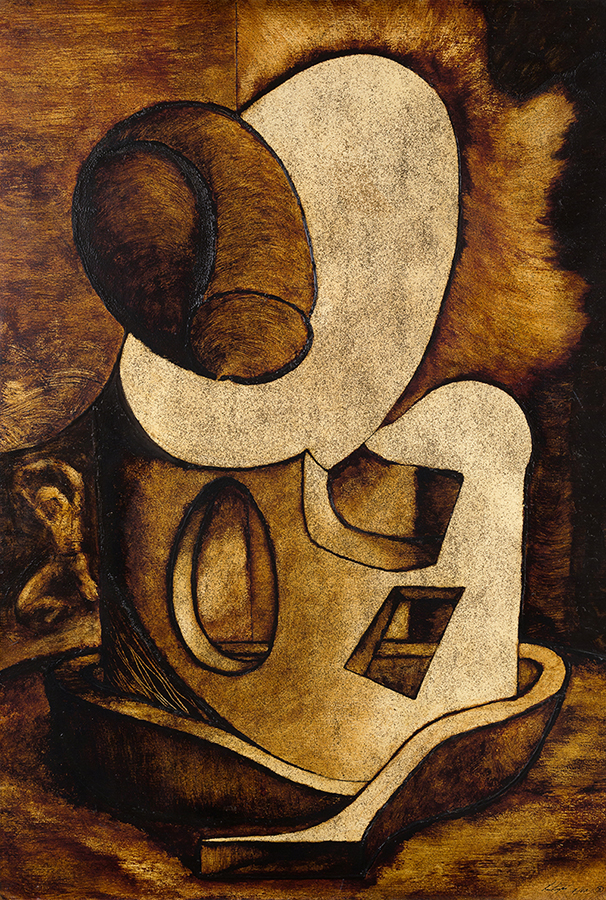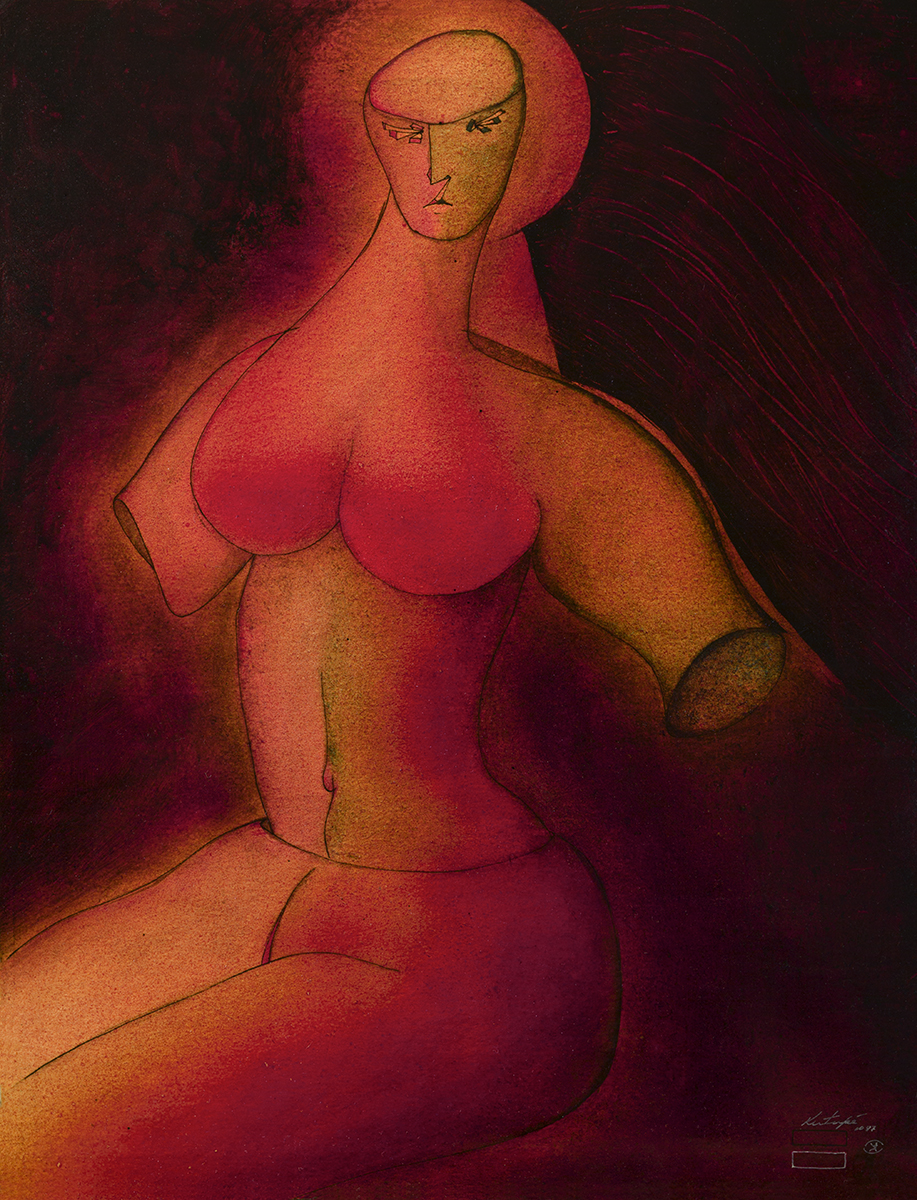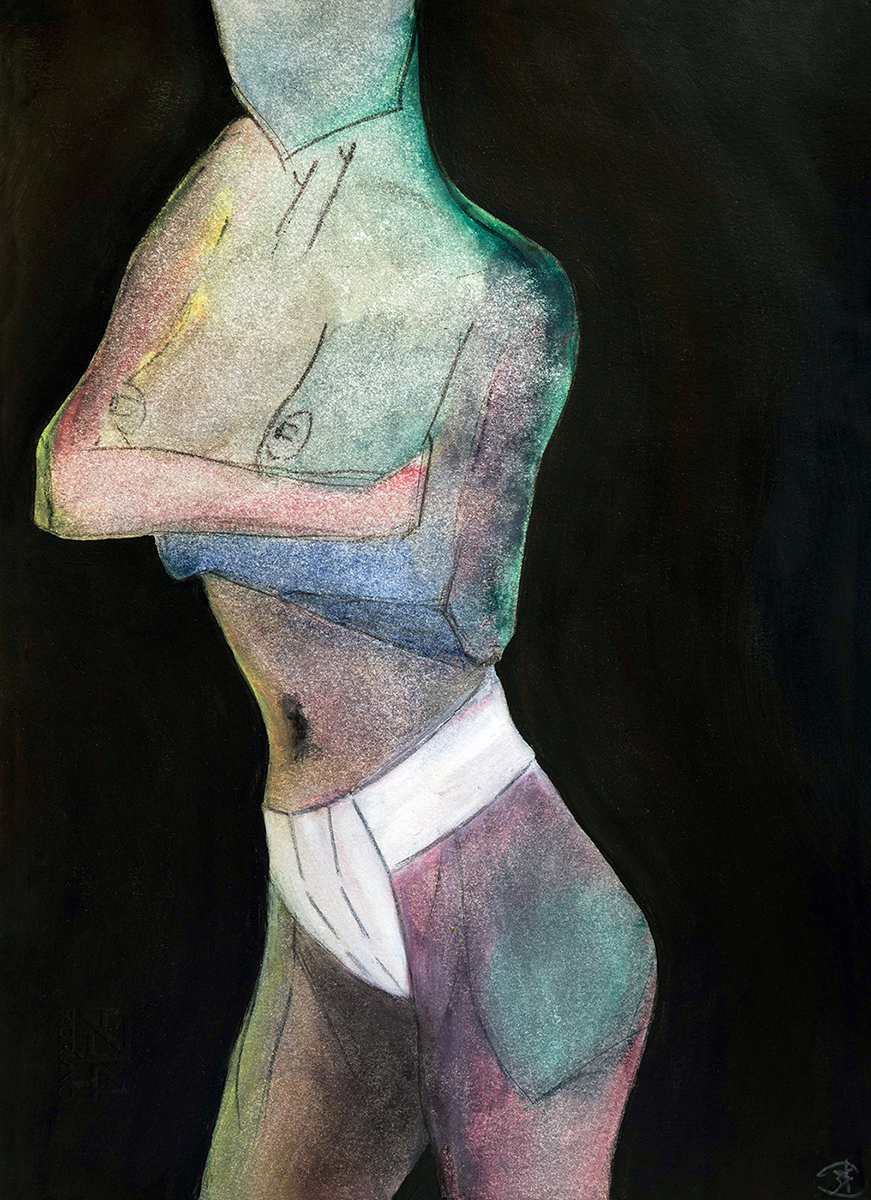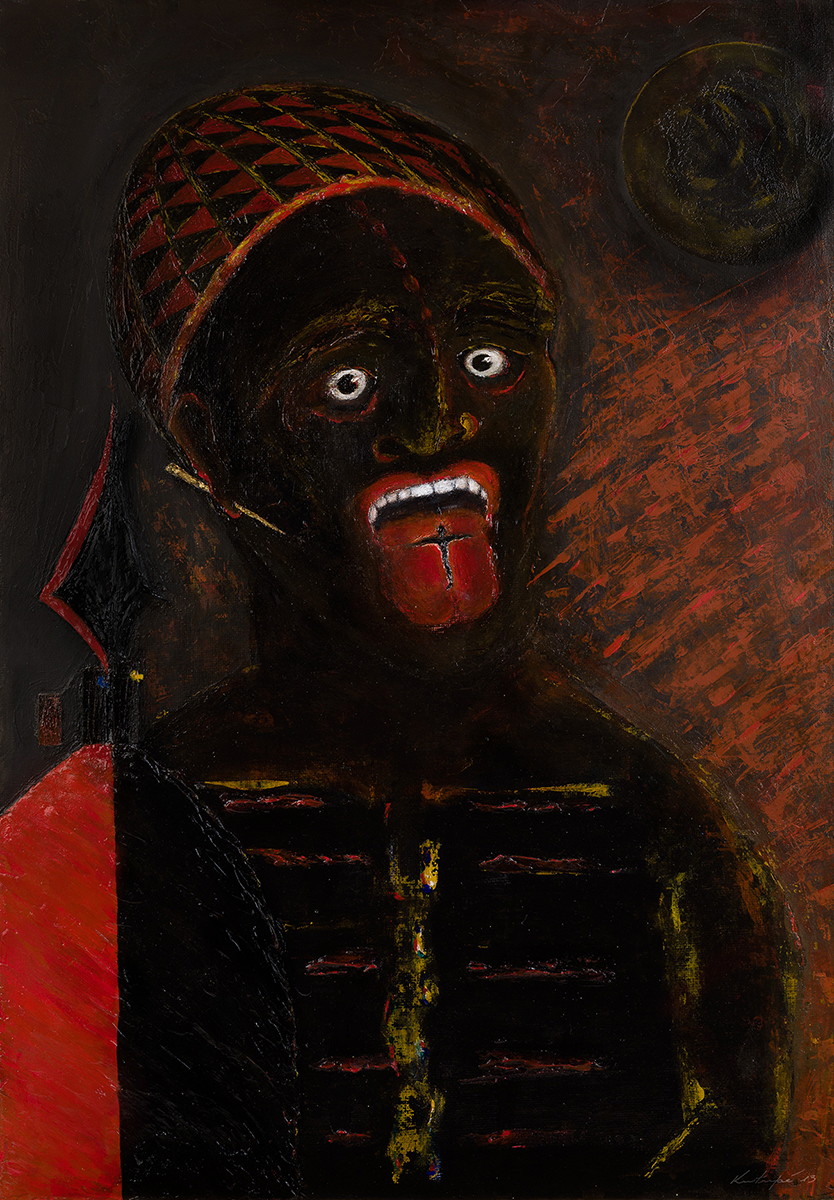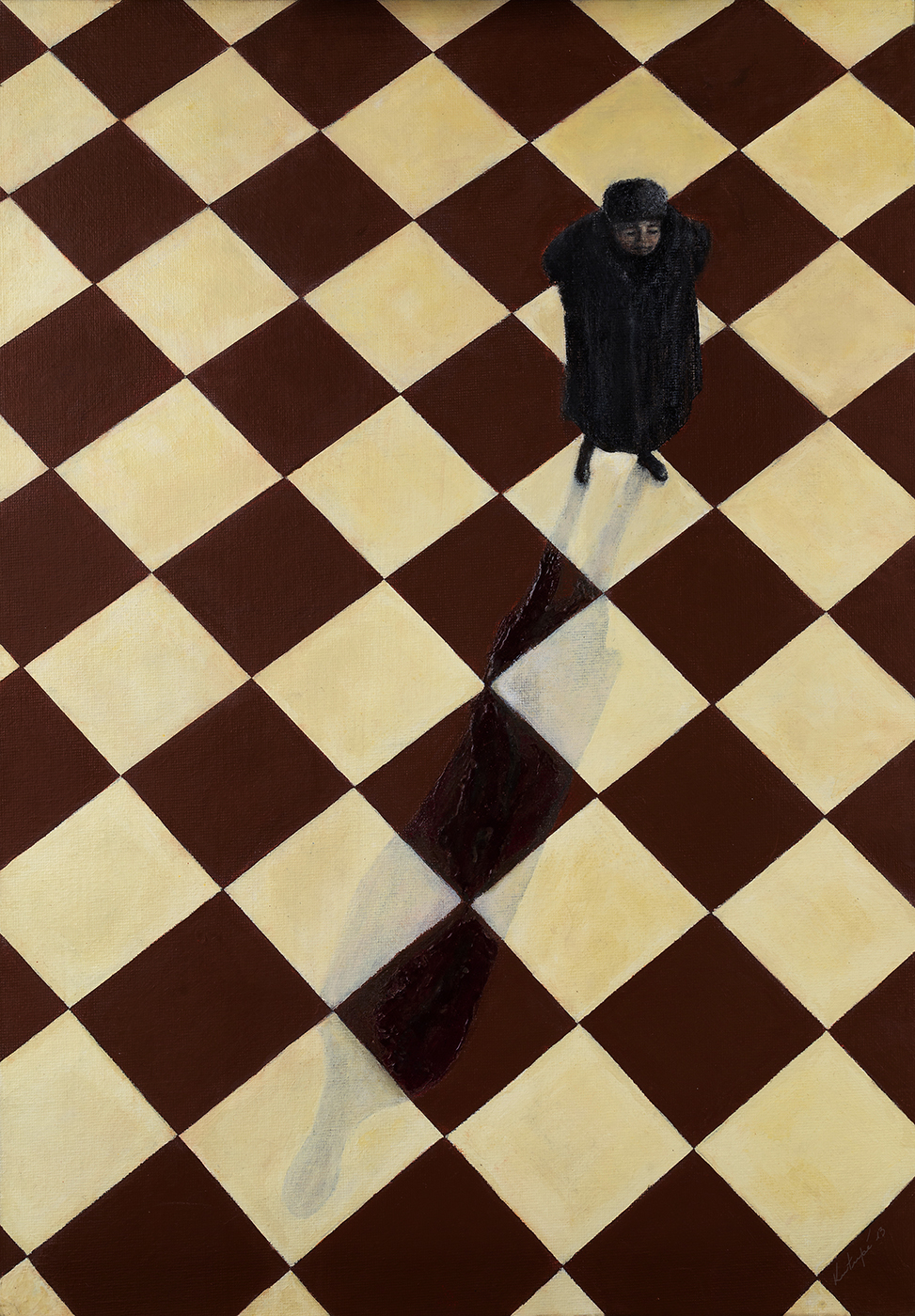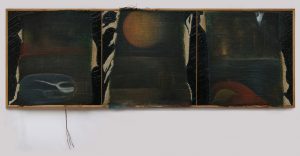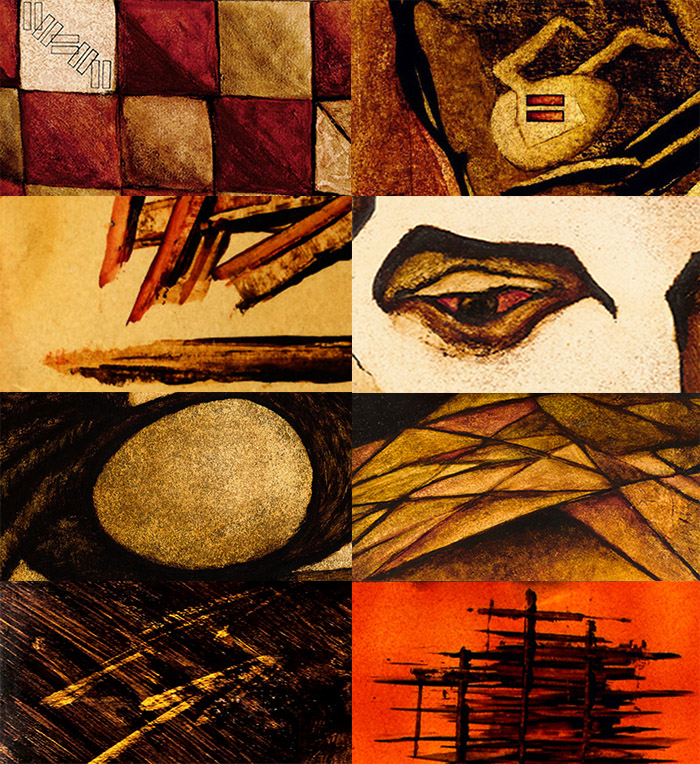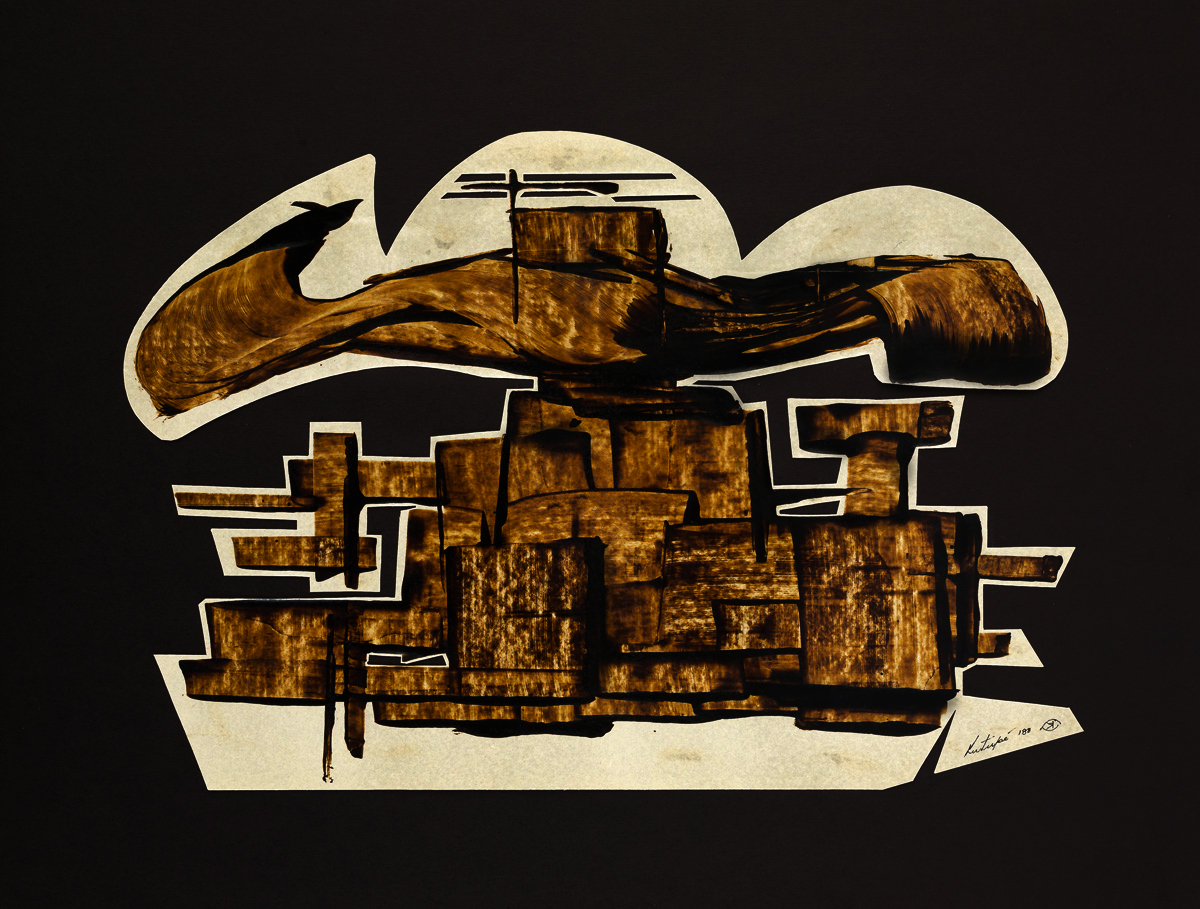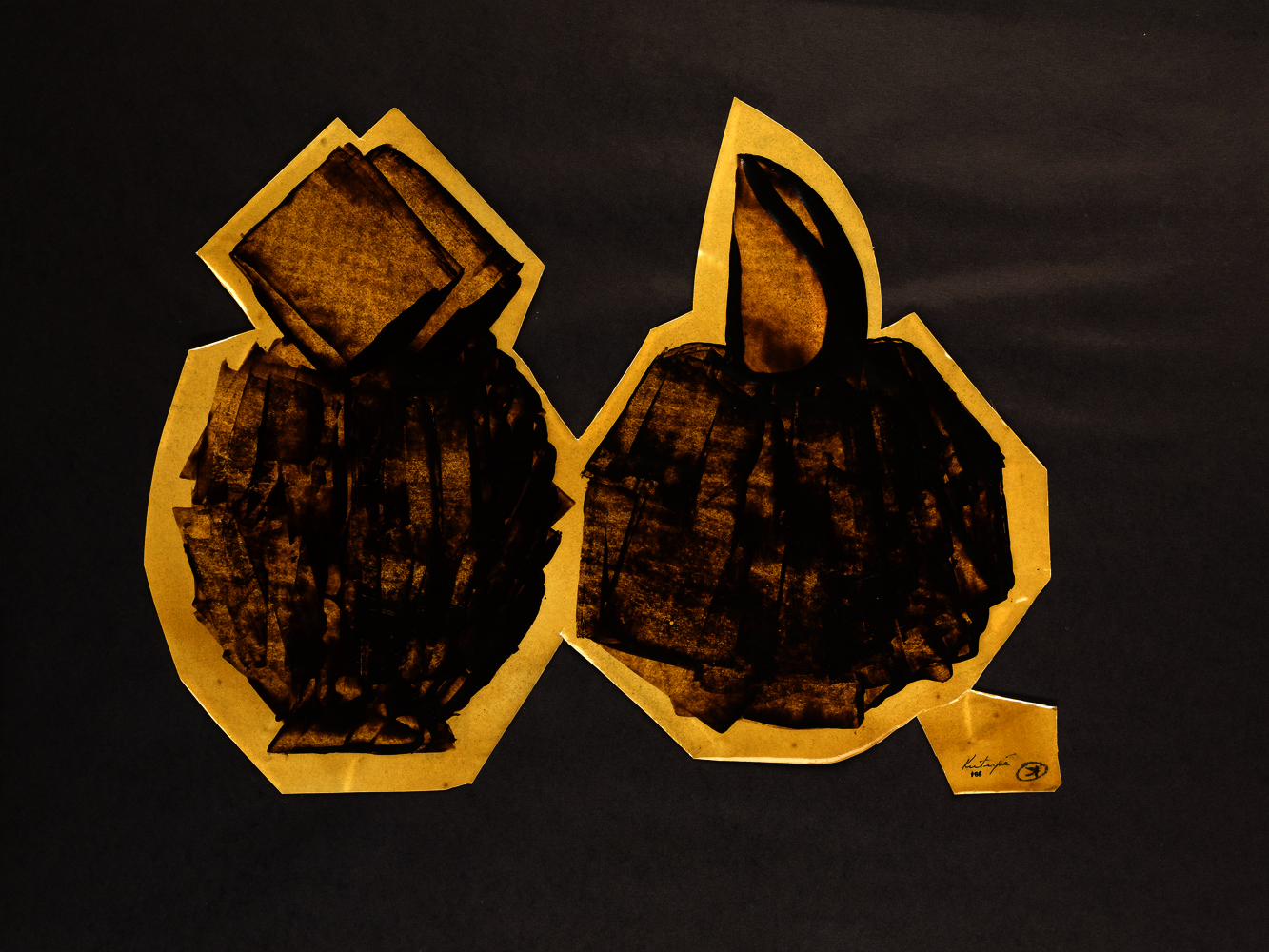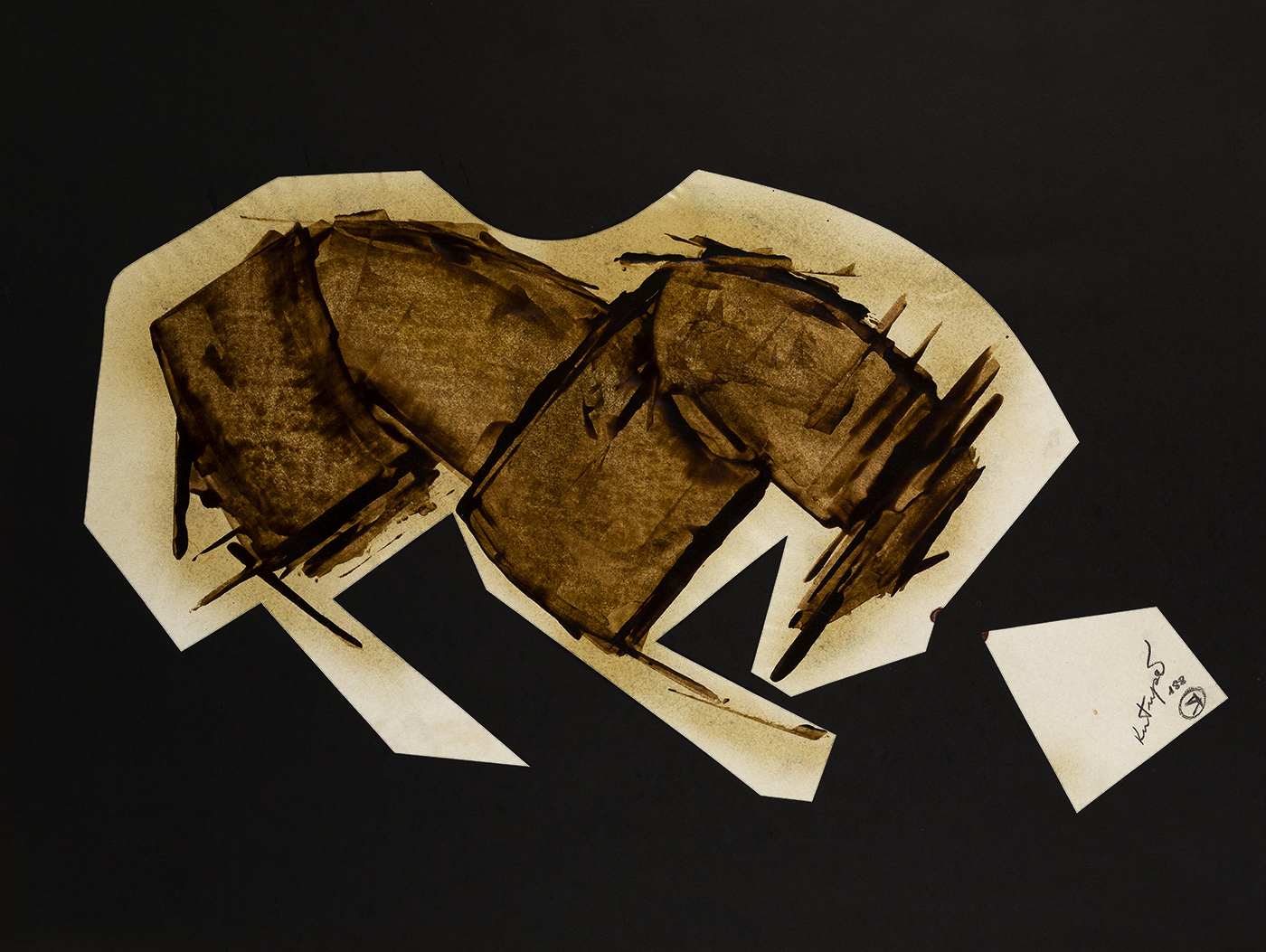Artistic Methods
The beauty of observation is more important than the observation of beauty.
[
A noteworthy aside: Of all the writings and abstracts on art that I have come across, I can aspire mostly to (though without the capacity to adhere) Ad Reinhardt's "Twelve Rules for a New Academy" (1953). Here we can presume what is a natural, methodological evolution of the post-photographic/"Black Square" artistic narrative. (A special note on Abstract Expressionism.)
]
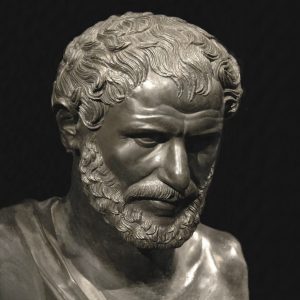
Setting the Stage
"Life has the name of life, but in reality, it is death." H
Pre-Socratic Greek philosopher, Heraclitus would suggest that the chief aim of human life was to cultivate good thoughts and to align them with one's words and one's deeds.
(Sounds like a good place to start ...)
I have encountered some philosophers in my day, some living, some dead, and I have always put to them a simple contention: with all the brilliance and thousands of years at their disposal, why haven’t the philosophers scripted tangible relief to humanity’s torpid and conflictual theatre? Is it really so difficult or complex? Why do the eternal equilibriums that permeate the universe falter on our tiny planet's stage?
What ails thee?
Personally, I have a necessity to find out about the ailments, and good practice would start with a diagnosis. Though preferring knowledge over ignorance and reason over desperation, I have come to suspect that intelligence and reality, like many of our other well-considered qualifications, are much overrated or worse, obsolete. This leaves us with the necessity to find more adequate instruments of analysis, as holistic and universal as possible so as to discover the direction in which truth lies. In this, art shows necessary promise.
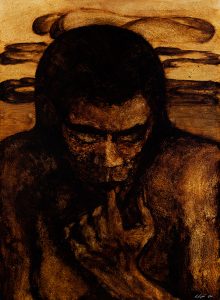
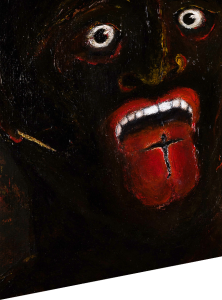
Art, Prime Principles, Archaic Past.
The grotesque realities of our time need to be addressed and as often is the case, our archaic past frequently holds clues for interpreting a troublesome present. Primitive eyes can gaze with primal innocence and less prejudice towards the modern biases that conceal our fate. The courage to distance ourselves from what is accepted and expected will generate a clearer picture of what awaits us and where new creativity may be found. (A study attempted by many artists of worth.)
It is not a pretty picture. Maybe, with true artistic integrity, there can be guidance.
Pragmatic considerations in approaching artworks:
- points-lines-geometry (composition), waves (chromatics) > hierarchical fragility
- vacuity (zero), flux (rhythm) > vibrational equilibrium, surface limits
- aesthetic value > beauty (harmony, symmetry), observational limits
- time/space/self > contemporary subjectiveness and perspective
- the theory of big, very big, complex > scale, intimidation, inadequacy
(art should cultivate strength and not exploit the weakness of the viewer - a difficult and delicate affair)
- our "domestic walls" > the beckoning of domestic art (complacency)
- paradox and contradiction > subtleties of unyielding dualism
- holistic reasoning > transversal currents, solidarity of opposites
- duality > contrast, contention, dissonance, chiaroscuro
- schools, movements, currents, bodies of work etc. > names given to boxes by box makers
- academia can only be relevant if it negates itself
(Un)reasonable expectations of significant artistry:
- artistic intentions > analysis (deconstruction) and meaningful solutions (constructive purpose)
- critical objectives > honesty and severity in nurturing artistic intentions
- public benefit > comprehending artistic intentions and critical objectives
- individual benefit > orientation and betterment (holistically)
ART (True Art): From this preamble, and begging indulgence, today my observations are as follows:
- Art is the extended interface between our material and sublime limits.
- art can be practiced from any position on this gamut (theoretically) ... though barely intelligible towards its extremes ...
as a general rule,
the more art is material the less it is sublime,
the more it is sublime the less it is material.
- Art needs no pulpit, stage or canvas
- Art is a holistic narrative between ego and spirit ... which determines personal liabilities and repercussions
- Art is always contemporary, even when it’s not
- Art is great when it is eternally contemporary
- Art’s expression is necessarily limited, compromised and incomplete (improvisation can help attenuate this)
- Art is a serious affair with serious consequences
“What is art for?"
- Art is necessary (unexpected?) for meaningful and comprehensive existence. It investigates, regulates and medicates the struggle between our existential and esoteric dimensions (dualism)
- Art is functional (language) in the dialectic process (evolution)
- Art has its risks, torments and discomforts ... but almost always tends to betterment
“What does art do?"
(if we let it)
- Art changes itself and others, inwardly and outwardly. It is a paradox of temporary, static and dynamic relevance (flux)
- Art tells the truth, even when it lies
- Art completes our vocabulary and our dialogue
- Art reflects and illuminates
- Art shows orientation (past, present and future)
“What does art look like?"
(as a material manifestation/technique)
-
Art is inevitably a philosophical, psychological, socio-political manifest to be read and interpreted
-
Art is a black or white or grey “surface”
-
All art is figurative, even when it’s not
-
Art does not fear poor lighting or poor presentation
- Art, like life, is apparently irresolvable
Why I do art.
- to cloak my cowardice
- for pragmatic self-indulgence and ego
- as a material record of analytical purpose
- for the utility and facilitation in the dialectical process
also ....
- Art reduces the limits of the visible spectrum
- Art dissects and samples reality and restrains opinion
- Art measures intellectual integrity, exposing strengths and weaknesses of all present (author, artists, critics, historians, institutions, public etc.)
- I feel that universal energy can "coagulate" into an artistic expression (esoteric interpretation)
- ... making art is a pathway to universal values and wondrous destinations (rarely)
- Life is a form of art, art is life forming
- ... from these thoughts, art is our best hope of finding vital sensitivity, truth, and orientation (or personal direction).
- ... it follows, "Art is more than everything."
How I do art.
(as a subjective material expression - inevitably autobiographical)
An artist can simply express his inner sensitivity/vulnerability through a representative manifestation (artwork) where the observer remains extraneous and can choose the depth of his involvement or his indifference. Or, the artist can take that sensitivity to analyze a given reality and represent it in a new and unexpected, but equally legitimate, alternative (here, the observer can be surprised, unprepared and obliged to redefine the parameters of observation or defensively disregard the investigation). I am interested in the latter but completely sympathetic, and even empathetic, to the former.
The art process (personally) is a spiritual dialogue with the art work, a free flow of ideas and energy that culminate in the opera's instigation and fruition. This evolves to being a reciprocal "painting" of each other until the incomplete work is incompletely finished. The art-product is just a lay symbol of this process.
Methodological Approach:
- Unlearning is as important as learning (questions have more implications than answers)
- Technique and history can be learnt but should be put aside as quickly as possible
- Practice/la bottega (action) is supported by theory (academia) not the other way around
- Improvisation, spontaneity, extemporization: all help contain mediocrity through the unexpected outcome
- Take note of (honest) criticism, especially those of children and "elementary" adults
- Expertise begets arrogance and cannot exist in any holistic life form (to know that we do not know – Socrates)
- Specialization (any) is a form of ignorance
Applied Methods and Practices: an eclectic adventure
- I am not a "decorator" > This, I shall leave to those better than myself (any such attributes in my work are incidental).
- I am not a colourist > Colour should have significance. Though (minimal) colour can reinforce content, colour (like realism) is mostly a distraction from content; colour can easily tend to decoration and, as with realism, can detract from holistic value (some exceptions: e.g. modern Australian Aboriginal art).
I prefer a limited palette, mainly Hematic Red (blood) and Ordure Brown (faeces) as symbolic references to the hidden colours of our basic, intimately inseparable substances.
-
I am not a realist > Realism, in the post-photographic era (thank God for photography!), should only be considered as a limited strategic device. Like colour, it may seduce the viewer and insinuate the esthetics of an artwork into the eye of the beholder but it runs the risk of relegating substance, if there is any, to marginality. The more abstract something becomes, the more the observer has the opportunity to cast himself within the artwork, making it more universally usable ... to extract the essence of what is personally relevant and fundamental while uncovering underlying commonalities (eclectic language). This is when artistic dialogue differentiates itself with a finer transversal quality ... like being mindful of the difference between art as a noun or art as a verb.
Realism, if overly or exclusively employed, would cause the artwork to gravitate towards benign “decoration”; I suspect that realism, especially hyper-realism (read: hyper-superficiality), tends to anti-art (which is not "non-art"). (some exceptions with sculpture - until 3D printing becomes the new photography)
- I am not techno-centric > The infatuation with technique and technology dowers a limited expressive capability in sublime terms; it is comparable to the visible spectrum as being a limit to perception: though the visible spectrum is true, it is dramatically insufficient in holistic terms and universal significance.
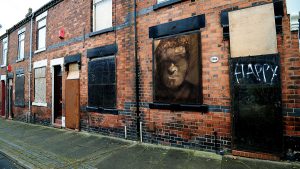
Contemporary social context: paradigms & paradoxes - £1 houses, Stoke City I am socio-political > Art cannot subtract itself from confronting the basic collective indoctrinations (includes finance, economics, academia, cultural and historic institutionalisations).
-
I am esoteric > The "canvas" is a surface to go beyond. ("the empty canvas")
-
I am philosophical > condemned to failure
(or as some have suggested, “I fail, therefore I am”)
Again, my vision and preference for meaningful art cannot disengage itself from its socio-contextual circumstances. Its construction is practiced from a pragmatic and observational perspective so as to give valuable service (analysis, revelation, orientation). The art-product should engage and review the spectator's paradigm in a comprehensible and definite manner and as genuinely as the artist can manage. The involved artist goes beyond the confines of space and time and self in search of a way forward (betterment), and is limited only by his generosity. This is karmic.
The withdrawn artist is just that. And produces just withdrawn art, which doesn't mean bad art at all, just less universally meaningful.
Artistic Themes and Devices
(the pudding)
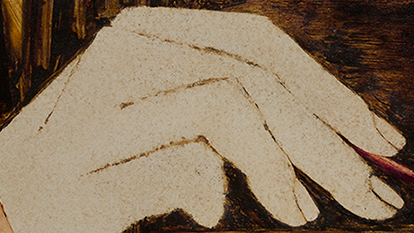
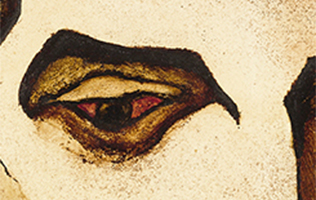
The Empty Canvas - the untold story that tells the story
"Music is the silence between the notes." Claude Debussy
... and the limits of the medium
"The bounded medium struggles to free the artist's state,
Surrendering a fragmented tale to a hopeful fate." K.

